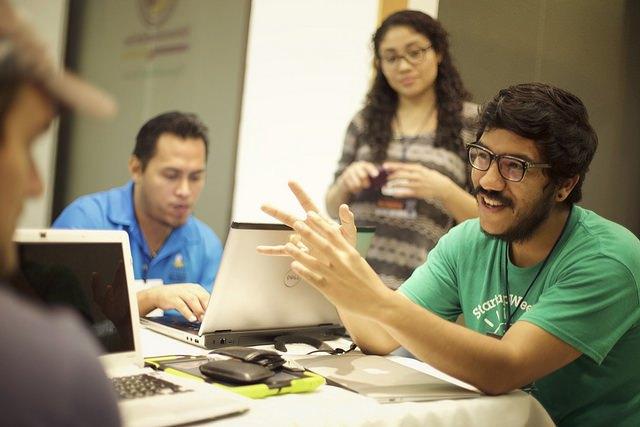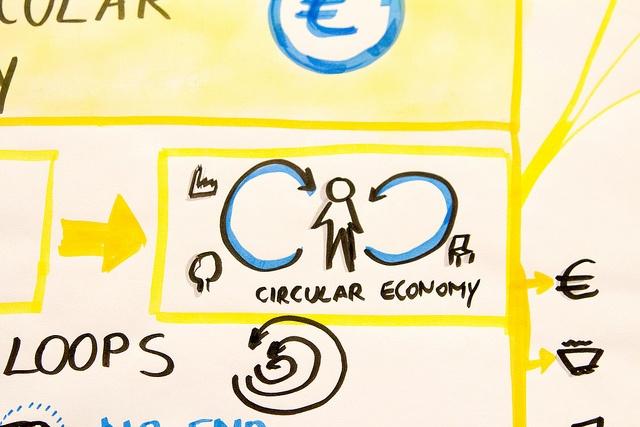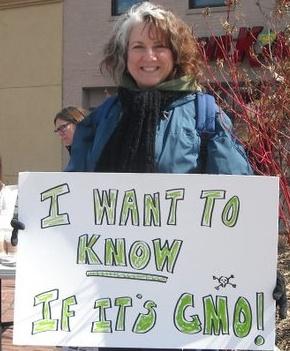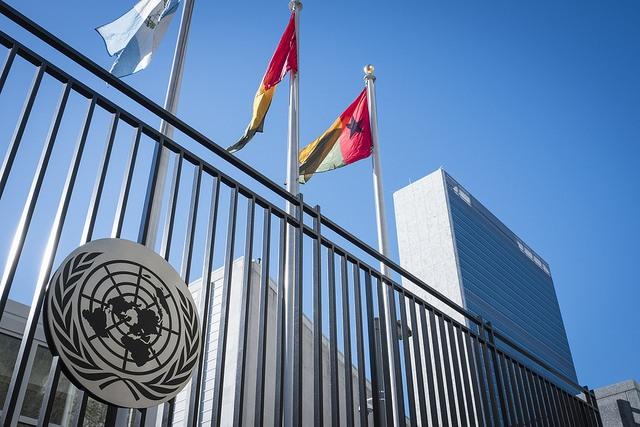Purposeful Work: Why All Generations Want to Find Meaning in the Day-to-Day


By Shannon Schuyler
As the Chief Purpose Officer for one of the world’s largest and most trusted professional services firms, PwC, I spend my days focused on helping the firm and our clients understand what purpose means for business. In other words, beyond making money, why are we in business?
Purpose is on a higher plane than corporate responsibility. It’s an organization’s raison d'être. The truth is, though, that you don’t have to be a Chief Purpose Officer in order to do purposeful work. In fact, I don’t think most kids dream of becoming a “Chief Purpose Officer” when they grow up – I know I didn’t! Almost every young person does, however, dream about having a job that matters, a job that has meaning and allows them to contribute to society in an impactful way.
With all the chatter around what drives employees, it’s important to note that the desire to find purpose at work cascades across all generations. In an ever-changing global business environment, that desire opens up an opportunity for executives to engage and unite employees across generations because – when it comes to purpose -- generations don’t matter. Everyone wants to find purpose in their jobs. A recent PwC survey of 1,500 employees and 500 C-Suite leaders in 39 industries proved this to be true, and found some interesting trends about what purpose means for employees.
First, we found that 83 percent of employees said finding meaning in their day-to-day work was most important to them. The reality is that while they’re at work, they want to feel that their job is meaningful. This doesn’t mean they want to volunteer after work; they don’t even necessarily want to do anything pro bono. They want their actual job content to be valuable. Frankly, they don’t just want to push papers and waste their time for eight or more hours per day.
At PwC, for example, we want to help our people understand how their role fits with the firm’s Purpose: to build trust in society and solve important problems. It’s our role as leaders to help employees see how their day-to-day jobs – for example, doing risk assurance or state and local taxes – are contributing toward the greater value of the business and society at-large.
One of the more troubling things we found through the study is the fact that while executives profess support for purpose, employees don’t see enough evidence of it being used as a guidepost for leadership decision-making. But we also found that purpose is a significant reason why employees decide whether to stay at an organization. In fact, 79 percent of employees and 81 percent of business leaders think purpose can impact employee satisfaction and retention. Alarmingly, though, only 29 percent of business leaders have changed how they recruit to better align with their purpose, and only 27 percent of employees said they were recognized for showing purpose in their work.
Finally, we found that employees – again, regardless of their generation – crave an understanding of how their work makes a difference in the lives of others, and want the opportunity to personally engage with purpose. In fact, 50 percent of employees would like to hear more from clients and customers about their organization’s impact. The bottom line is that, from an employee perspective, hearing about purpose from the top-down through emails, reports or executive remarks just isn’t as meaningful as hearing stories of impact from clients, customers or even peers. We also heard that employees want to hear about their organization’s purpose and impact via social media.
Indeed, this research points to some significant gaps when it comes to engaging employees on purpose. These gaps, however, present business leaders with an exciting opportunity. C-Suite executives should strive to help employees find their own personal purpose. Are we really so worried that if people find their own purpose, they are going to leave their jobs? That could not be further from the truth, and this narrow view could prevent business leaders from realizing their recruitment and retention goals. In fact, another study released this month found that 74 percent of corporate employees say their job is more fulfilling when they are provided with opportunities to make a positive impact on social and environmental issues. Furthermore, 7 in 10 said they would be more loyal to a company that helps them contribute to those efforts.
Beyond retention and personal satisfaction, though, we have to ask: Isn’t it possible that engaged employees are more productive and perhaps even more innovative? Understanding organizational purpose means discovering why your organization exists. To pass that understanding on to employees could help shed light for even your most veteran staffers on exactly why they get out of bed and go to work in the morning. Surely, then, tapping that sense of individual and organizational purpose could support productivity and innovation in the workplace.
There are four ways to begin helping your employees find purpose at work, today:
- Seek to align business decision-making with your organization’s purpose. Leaders have an opportunity to demonstrate that the organization’s purpose is central to business strategy. From there, employees can become advocates for purpose and better understand how they contribute.
- Keep track of what purpose means to your people. By helping employees answer, “why does my work matter?,” managers can help employees understand how they as an individual make a difference in the organization and in the world.
- Communicate the human element of your work. Personal delivery and the opportunity for dialogue is important.
- Incorporate purpose into your recruitment strategy. A company that touts commitment to and passion for its purpose must also use it for recruitment and cultivate these same values in their people.
As demand continues to grow for products and services that deliver both profit and purpose, business leaders have an obligation and an opportunity to engage and empower their employees to find meaning at work.
Image credit: Flickr/Steven Zwerink
Shannon Schuyler is Chief Purpose Officer of PwC.
From Pipedream to Product Innovation: The Rise of the Circular Economy


The famous "Blue Marble" photograph (above) was the first shot ever created of the Earth in full view. It was taken by the Apollo 17 crew on Dec. 7, 1972 as they left the Earth's orbit for the moon. It quickly became one of the most widely distributed images ever created. Although the response to this iconic image varies, this perspective of Earth created a paradigm shift for many people and helped launch the environmental movement. It allowed us to conceptualize that finite resources are available to us and that our planet is quite isolated.
Ellen MacArthur came a similar realization when she became the fastest solo sailor to circumnavigate the globe in 2004. In one instance, a storm approached when MacArthur was 2,000 miles away from the nearest city and well beyond the reach of planes and helicopters. She realized the world is a place with interlocking cycles and finite resources.
"I had with me the absolute minimum of resources in order to be as light, hence as fast, as possible," MacArthur said of the 2004 journey. "At sea, what you have is all you have. Stopping en route to restock is not an option, and careful resource management can be a matter of life or death: Running out of energy to power the autopilot means you can be upside down in seconds.
"My boat was my world. I was constantly aware of its supplies limits. And when I stepped back ashore, I began to see that our world was not any different. I had become acutely aware of the true meaning of word ‘finite,' and when I applied it to resources in the global economy, I realized there were some big challenges ahead."
Inspired by the concept of the circular economy, MacArthur later went on to found the Ellen MacArthur Foundation in 2010. The foundation aims to promote a circular economy "that is restorative and regenerative by design," and which aims to "keep products, components and materials at their highest utility and value at all times, distinguishing between technical and biological cycles,"according to its website.
This complements the thinking behind "cradle-to-cradle" design. William McDonough, designer, thought leader and co-author of "Cradle to Cradle: Remaking the Way We Make Things" and "The Upcycle: Beyond Sustainability—Designing for Abundance," asks what buildings and products would look like if designers took into account "all children, all species, for all time."
Yes, shifting to a circular economy might seem like a pipe dream, but it is increasingly becoming a reality. How do we fuel the transition to the circular economy, and who will be the key players? To gain insight into this topic, TriplePundit spoke with Lewis Perkins, president of the Cradle to Cradle Products Innovation Institute, a nonprofit organization that serves as a change agent with open-source information.
The institute administers the Cradle to Cradle Certified Product Standard. Co-created by McDonough and Michael Braungart, the standard provides a framework for designers, manufacturers, suppliers, retailers, and consumers wishing to join the circular economy and go beyond with regenerative productions. It has a vision for restorative production which uses materials and processes that honor clean energy, safe chemicals, clean water, social fairness and endlessly reused materials.
Designing a sustainable future
The Cradle to Cradle Products Innovation Institute announced the winners of its 2016 Cradle to Cradle Product Design Challenge last week. Initiated last year in partnership with Autodesk and the Alcoa Foundation, the challenge aims to "engage and inspire designers and students to help design a sustainable future."
Creating products for the circular economy requires foresight. Companies must think about how to eliminate waste, use materials that do not contain chemicals of concern, and integrate materials like nutrients that cycle through an ecosystem repeatedly. Perkins sees designers and architects as playing a significant thought leadership role in advancing the circular economy. Designing products with materials that are recyclable may be a step in the right direction, but it also presents its challenges. For example, due to the decline in oil prices, it's less economic to upcycle plastic because the raw material costs are lower.
"The designer has the opportunity to select the inputs and make choices around how products are designed," Perkins told 3p. "Architects and designers can design for materials to go in future cycles. They can also have influence in product materials and how they speak to suppliers about the demand for safe materials that can be perpetually cycled with value."
Going beyond circularity: Function and inclusion
Perkins believes many aspects of product design are important, and not just circularity. "Designers sit at the intersection performance, function, beauty and style," he told us. "Perhaps a product fits into the circular economy, yet it isn’t beautiful or it doesn’t perform well. Does our product speak to us, make our lives easier or allow us to differentiate ourselves? Is it made with a positive impact?"
When thinking of the concept of a circular economy, it seems very important to be inclusive of all people to catalyze a true shift. Many "green" products however can be seen as something for the affluent, but Perkins doesn't agree with this perspective. "There is a perception that products that are designed for a higher level of positive environmental impact are more costly," he said. "There are many products in our registry that are equal or lower in cost than those that are not made with a cradle-to-cradle design. There is also a mass rethinking around what value is."
Collaborating for results
The relationship with competitors is also shifting for many companies. Working together can benefit the triple bottom line far more than working solo in many cases.
The Better Cotton Initiative is a good example of bringing together varied stakeholders, including companies from the same industry. Levi Strauss & Co., Puma and H&M all collaborate for sustainable sourcing improvements through the Better Cotton Initiative, potentially benefiting a variety of stakeholders.
Consumer take-back initiatives are another arena where partnerships can improve outcomes by streamlining operations, sharing ideas and pooling expenses to cut costs.
"Massive collaboration is what we’re going to see both within industries and across industries within the circular economy," Perkins predicted. "We want our materials taken back, and companies will see an opportunity in doing this. Lots of collaboration can make it happen. One company can’t solve it."
Image credits: 1) NASA on The Commons; 2) Courtesy of the Cradle to Cradle Products Innovation Institute; 3) Flickr/Plan C Empowering Circular Futures
'Three Amigos' Canada, U.S. and Mexico Forge Clean Energy and Climate Goals


If anything good comes out of the climate change debate these days, it's the capacity to forge unlikely partnerships. Take, for example, the so-called Three Amigos Summit in Ottawa this week.
In what may be a first, the United States, Mexico and Canada announced yesterday that they will work together to meet a series of environmental, humanitarian and security goals that have long been of concern for the three countries. U.S. President Barack Obama joined Mexico's President Enrique Peña Nieto and Canada's Prime Minister Justin Trudeau at what is more formally being referred to as the North America Leaders' Summit.
Not surprisingly, at the top of the list is climate change and clean energy options.
"We find ourselves now in a moment where the alignment in terms of policy goals and focus on clean energy between our three countries is stronger than it has been in decades," said Brian Deese, senior advisor to President Obama, in a press announcement.
The agreement between the three countries includes a pledge to slash methane emissions by 40 to 45 percent below 2012 levels by 2025, a goal Canada and the U.S. forged earlier this year. Mexico's decision to join the agreement is considered a significant accomplishment of the Leadership Summit.
Clean energy targets are next on the list. The three leaders agreed to work toward a goal of 50 percent clean energy by 2025. All three countries have seen steady progress in renewable energy sectors. Mexico's solar and wind sectors tripled in recent years, says Daniel Chavez, a partner in the Houston office of McDermott, Will and Emery, LLP. But the country is still working toward the 10-year goal of 35 percent of clean energy that it set in 2014.
An estimated 80 percent of Canada's power generation comes from green sources, largely due to the industries that dominate its coastal provinces like hydro-powerhouse British Columbia and windy Quebec. With the U.S. federal government's continuing, but often contentious, effort to reduce fossil fuel-based power consumption in the mix, North America's clean energy ratio stood at 37 percent last year.
And the three leaders plan to tackle other goals as well, some of which strike closer to the heart of travelers and residents along their countries' borders.
- Broaden the scope and eligibility of the NEXUS program between the U.S. and Canada and the similar U.S.-Mexico entry program, Viajero Confiable.
- Improve business online customs access.
- Increase security measures to screen for foreign fugitives with ties to North America. A pilot plan is now in the works.
- A financial commitment of $10 million to the United Nations Refugee Agency to assist with the displacement of migrants due to violence in areas like Iraq and Syria.
Environmental organizations largely applauded yesterday's announcements. World Resources Institute U.S. director, Sam Adams, said the commitments may help to incentivize more focus on renewable energy in the three countries.
"The bold pledge to power half of North America with clean electricity within 10 years sets a marker that should accelerate investment in renewable energy," Adams said on Wednesday. "The continent-wide goal to slash methane emissions 40 to 45 percent by 2025 represents one of the greatest near-term opportunities to slow global warming. Sharing a common vision for the future, these leaders recognize the importance of providing economic stability and greater climate security for the long term.”
Critics, while largely impressed with Wednesday's accomplishments, didn't hold back in suggesting ways the Three Amigos could improve the accords even further.
Greenpeace questioned why energy sources like nuclear and carbon capture were included in the clean energy mix, while Canada's Green Party leader challenged Trudeau to improve the country's clean energy commitment even further.
But it was Pembina Institute, an environmental research organization, that really summed up the accomplishments of this week. "When working together, North America can forge important progress on global issues," it said. With an outgoing U.S. president and less than six months to go before the elections, that uncommon unity across borders may be more important than we realize when it comes to combating climate change.
Image credit: Prime Minister Justin Trudeau via Twitter
Volkswagen Agrees to Pay $14.7B Following Emissions Scandal


On Tuesday, Volkswagen reached a record settlement to pay up to $14.7 billion as a result of its "dieselgate" emissions scandal. Owners of cars with installed “defeat devices” are the big winners of the settlement with Volkswagen pledging to repair or buy back the diesel-guzzling vehicles pending a court approval.
Owners of Volkswagen or Audi 2.0-liter diesel vehicles from model years 2009 to 2015 could be eligible for big-time compensation. If the car is deemed eligible, owners will receive at least $5,100 in cash payment and at most $10,000. Those who wish to sell their car back to the automaker could receive somewhere between $12,500 and $44,000 depending on the car’s make. Volkswagen also offered to repair the faulty, environmentally-unsafe cars. Of course, that's only if the automaker can manage a way to do so that meets the Environmental Protection Agency’s standards.
On top of the $10 billion set aside for paying owners back, Volkswagen agreed to pay $2.7 billion for environmental cleanup and another $2 billion to research the promotion of zero-emissions vehicles in the United States. The $2.7 billion will be given to the states to minimize diesel emissions by replacing old diesel-burning machines like trucks and buses, CNNMoney reported on Tuesday.
The automaker intentionally installed software that restricted emissions when the cars were being tested. But after passing the tests, the vehicles dumped up to 40 times the EPA-approved levels of pollutants when driving on roads. Volkswagen came clean of the claim in September.
Volkswagen is required to replace or repair 85 percent of affected cars by Dec. 1, 2018. If not, the company will be slapped with potentially hundreds of millions of dollars more in federal fines, the Washington Post reported.
The German automaker has easily surpassed the previously largest vehicle settlement in history — Toyota paid $1.2 billion in 2012 after 93 deaths related to unsafe acceleration in vehicles. But Volkswagen may not get off the hook so easy. The Department of Justice is investigating potential criminal charges against the company.
“Volkswagen’s proposed settlement is unprecedented in its dollar amount,” AutoTrader analyst Michelle Krebs told CNNMoney. "But the situation was unprecedented, in that it was not a mistake but a deliberate deception.”
In April, seven months after the scandal caught fire, Volkswagen set aside $18 billion to cover the global phenomenon, Forbes reported. The company ducked and dodged the EPA’s testing routine for seven years, but is now certainly paying the price.
The owners of the some 475,000 vehicles swept up in the scandal saw their car’s value plummet following the exposure of the cheated emissions tests. The AP reported that the average VW diesel dropped 19 percent — from an average $13,196 in August 2015 to $10,674 in May 2016, according to Kelly Blue Book.
These 2009-2015 2.0-liter diesel vehicles by Volkswagen or Audi may be eligible for repair or replacement: (via the LA Times)
- VW Beetle (2013-2015)
- VW Golf (2010-2015)
- VW Jetta (2009-2015)
- VW Passat (2012-2015)
- Audi A3 (2010-2013, 2015)
Vermont GMO Labelling to Start Tomorrow


Vermont will soon be the first state in the nation to require labels on genetically modified (GMO) foods. Its GMO-labeling law, the first passed in the nation, goes into effect on July 1. Maine and Connecticut have since passed their own GMO-labeling laws. But they won’t go into effect until neighboring states pass similar legislation.
What exactly does Vermont’s law do? It requires that food manufacturers “label many products containing GMOs that are sold in Vermont,” the Burlington Free Press reported when it passed in 2014. Certain food products are exempt, including meat, dairy and liquor. The label can be worded three ways: “partially produced with genetic engineering," “may be produced with genetic engineering,” or “produced with genetic engineering.”
Despite scare tactics and brand crowing, stores appear to be in compliance. A representative from a Hannaford chain location in Burlington, VT confirmed to TriplePundit by phone that they've been gearing up for the transition for several weeks and all the major brands are in compliance. New product packaging will roll out tomorrow as planned.
The law defines genetic engineering in several ways, stating that is a “process by which a food is produced from an organism or organisms in which the genetic material has been changed” through several applications. You can learn more about these applications in the bill here.
That is all a bit confusing, so let’s look at the most common GMO crops: soy, corn and cotton. They are genetically engineered with what the U.S. Department of Agriculture (USDA) calls “pest management traits.” Such technologies first became commercially available for major crops in 1996. Now, their adoption in the U.S. is widespread. The two most common types of GMO crops are herbicide tolerant (HT) and insecticide resistant (called Bt) varieties. The traits of HT crops allow them to tolerate certain herbicides, including glyphosate, the most widely used herbicide in the world. Bt crops have traits that allow them to tolerate certain insecticides.
In 2013, American farmers used HT soybeans on 93 percent of all soybean acreage, according to USDA data. HT corn accounted for 85 percent of corn acreage, and HT cotton accounted for 82 percent of cotton acreage the same year. Bt cotton made up 75 percent of cotton crops, and Bt corn accounted for 76 percent of corn crops in 2013. During a 16-year period (1996 to 2011) in which HT crops increased, herbicide use also increased, a 2012 study found. HT crops coincided with a 527 million pound increase in herbicide use in the U.S. during the 16-year period studied.
And glyphosate, the main ingredient in Roundup, continues to lead the pack. In the spring of 2015, the International Agency for Research on Cancer (IARC), the cancer agency of the World Health Organization, labeled glyphosate “probably carcinogenic” to humans. The IARC found “convincing evidence that glyphosate can cause cancer” in laboratory animals. Back in 1985, the U.S. Environmental Protection Agency (EPA) classified glyphosate a possibly carcinogenic, but re-evaluated the herbicide’s status in 1991 and changed its classification to evidence of non-carcinogenicity.
In September 2015, the California Environmental Protection Agency’s Office of Environmental Health Hazard Assessment (OEHHA) announced its intention to list glyphosate as a substance known to cause cancer under the Safe Drinking Water and Toxic Enforcement Act of 1986 (Proposition 65). This spring, Monsanto filed a petition for writ of mandate in California Superior Court in Fresno in an attempt to block the listing.
Attempts to stop Vermont’s GMO-labeling law
U.S. congressional members have tried repeatedly to stop Vermont’s law from taking effect. The latest attempt happened last week when two members of the Senate Committee on Agriculture, Nutrition, and Forestry came up with a bill to halt the Vermont law. Consumerist called the two senators, Pat Roberts (Kan.) and Debbie Stabenow (Mich.), the “most powerful members” of the Committee. Both have also received sizable contributions from agribusiness PACs and donors.
Their bill seeks to amend the Agricultural Marketing Act of 1946 to require the Secretary of Agriculture to create a “national disclosure standard for bioengineered foods.” If passed, the bill would prevent any states from enacting GMO-labeling laws and would negate Vermont’s law.
Poll after poll shows that Americans favor labeling GMO foods. A November 2015 poll by the Mellman Group found that 89 percent of those surveyed said they favor mandatory labels on “foods which have been genetically engineered or containing genetically engineered ingredients be labeled to indicate that.” A Consumer Reports poll in June 2014 found that 92 percent said they believe GMO foods should be labeled.
Photo: Flickr/Alexis Baden-Mayer
Jennifer Boynton contributed reporting to this article.
U.N. Global Compact Leaders Summit: Let's Build a Better World … Together


By Dawn Emling
Over the last several decades, it has become the norm that companies are expected to play their part on the world stage as responsible corporate citizens. This means engaging in the local communities where they conduct business and operating in a manner that is respectful of the environment. It also means furthering an agenda that promotes equality and advancement of human rights and dignity around the world. As the world’s access to data and information increases transparency and companies continue to extend their reach across geographic boundaries, it is more important than ever to work together toward a common goal for the future.
In April, Thomson Reuters officially joined the U.N. Global Compact, the world’s largest corporate sustainability initiative. Launched in 1999, the compact now has 13,000 corporate, investor, law firm, NGO and policymaking participants from over 170 countries. This is an important partnership because it reinforces our long-term commitment to the U.N. principles protecting human rights, labor, the environment, and combating corruption and fraud.
At Thomson Reuters, we believe strongly in values based revenue generation. What do I mean by that? I mean that not only do we, as a business, operate in a socially responsible manner, but helping other companies do the same is also a central tenant of our value proposition. Many of our core products and services help our clients understand their environmental impact, manage risks in their supply chain, and mitigate the risk of doing business with corrupt partners and vendors.
In September of 2015, the United Nations released the 17 Sustainable Development Goals (SDGs), a set of goals with 169 targets to serve as guideposts toward sustainable development. These goals cover a range of issues including ending poverty and hunger, improving health and education, and combating climate change.
Last week, members of the U.N. Global Compact — the U.N. initiative with the private sector to advance sustainability -- came together in New York for the Leaders Summit. The Summit marked a new era — away from what many traditionally considered as the responsibility of governments and toward a shared imperative with the private sector. Production and consumption are at the heart of the SDGs: Businesses and the private sector have become immensely influential toward realizing a sustainable future.
The two-day summit kicked off with remarks from U.N. Secretary-General Ban Ki-moon and Lise Kingo, executive director of the U.N. Global Compact, who discussed the principles and solutions for the new era of responsible business. Ms. Kingo opened the Summit with a call-to-action for the private sector, “Business too has come to realize that the past is no longer viable as a business proposition for the future.”
Their visionary dialogue was followed by panels of business leaders providing concrete examples of how to best promote and achieve the SDGs and what tangibles we can do within our own organizations to champion this cause. I was particularly inspired to hear about circular economies, public-private partnerships, and the evolution of socially responsible investing to advance the SDGs through private finance. Adena Friedman, president of NASDAQ, commented, “The role of the capital markets is to fund and enable good ideas.” Another speaker added, “The SDGs represent our solution to get us out of the fix we’ve found ourselves in.”
Thursday’s programs explored how broad global goals can be applied locally and how this application is essential to success. Highlighting risks and opportunities and how companies can lead this charge, the individual panelists shared their own insights and unique experiences in collaboration and driving their commitment forward. As a company with operations in over 100 countries, understanding this interplay is essential for us.
Over the two days, leaders from the private sector, civil society and governments explored practical ways to deliver on concrete strategies. With over 1,000 attendees participating, some of the best and brightest shared their common vision and unique ideas to drive this challenge.
I like to think that the businesses of tomorrow will play a large part in creating the world of the future. At Thomson Reuters, we are proud to be a part of this global coalition to drive sustainable growth forward through responsible business engagement.
Dawn Emling is Head of Strategy for the Corporate Responsibility & Inclusion team of Thomson Reuters. In this role she oversees planning, execution and measurement within the Corporate Social Responsibility, Sustainability, and Diversity & Inclusion functions. Dawn has over 20 years experience in Corporate Social Responsibility, international development, and social entrepreneurship. Prior to her role with Thomson Reuters she served as CEO of a sustainability consulting firm and COO of a social impact technology company. During her tenure with Credit Suisse, Dawn held two leadership positions as the Head of Sustainability in EMEA and the Head of Community Investment in Asia. Early in her career, Dawn was a Senior Advisor to the United States Agency for International Development.
Image credit: Flickr/U.N. Photo
How APP’s Paper Mills Demonstrate Both Strength and Sustainability


The reason why Asia Pulp and Paper (APP) has become the largest company within the industry (or second largest, depending on the source cited) is its ability to scale. With size, of course, comes more scrutiny. Hence the negative press earlier this decade as many of the world’s most influential NGOs called attention to what they described as the company falling short of meeting environmental regulations within the countries in which it operates. APP replied that it always followed local laws and now, insists that its mills operate beyond compliance.
As evidence, APP recently opened two of its mills to journalists visiting the company’s operations in China. The company says the mills are amongst the world’s largest and most efficient within the industry. As we explored the company’s paper mills, APP representatives pointed out features they said are designed to minimize the company’s impact on the local environment.
The first mill is in Ningbo, China, which is about a 130-mile (215 km) drive south of Shanghai. To say this $1.8 billion mill is massive would be an understatement. Located a 20-minute drive from Ningbo’s city center, the mill operates as a small city in itself. About 1,600 employees live adjacent to the mill and have access to amenities such as gyms, cafeterias and health care.
And those employees manage a plant so huge that the site has its own port, through which processed wood pulp comes from across APP’s supply chain. Most of the pulp is churned into white board, the stiff paper product used for a variety of purposes from packaging to gift bags. According to APP, this plant’s total capacity is 1 million tons of white board, which is spun into massive roles before it is cut and shipped across the world. To understand just how huge APP is, the Ningbo plant can finish one jumbo roll in 45 minutes — and the factory operates 24 hours a day. The average for other paper mills worldwide, based on data APP supplied to the visiting journalists, is about eight jumbo rolls per day.
This is not the kind of visit for those who have a sensitive olfactory sense. The smell is best described as burning plastic combined with rotten garbage and the locally popular durian fruit. The entire process, which includes coating and bleaching, clearly has its environmental impact.
To that end, APP says it invested about 500 million Chinese Yuan, or $76 million, in environmental protection. Highly efficient boilers help scrub out the noxious sulfur and nitrogen oxide that nationwide contributes to China’s debilitating air pollution. An onsite waste water treatment plant scours 40,000 tons of water a day, which is discharged 10 meters (33 feet) under the sea.
Is this anywhere near the closed-loop and zero-impact system companies in the West say they are working toward? Nowhere close, if we lean on North American or European standards. Is this mill an exemplar for industry in China? According to APP’s representatives, the answer is a resounding yes.
Even more impressive, or jarring depending on one’s point of view, is the company’s mill on Hainan Island. Unlike the Ningbo plant, which takes in pulp from other facilities, the Jinhai Pulp Mill starts its manufacturing process from the very beginning with wood. In addition to trees harvested from elsewhere in the country, wood chips are hauled in to the mill’s adjacent seaport — provided, as APP representatives assured me, they adhered to the company’s zero-deforestation policy.
Located in one of China’s special economic zones, this mill is overwhelming. According to the company, it is the world’s largest single-pulp mill, with a machine that is half a kilometer (1,640 feet) long and is centered in an area that comprises 4 square kilometers. Again, APP says the mill operates at a much higher environmental standard than what is required under Chinese law.
While the company offered few specifics, let's just say that based on the relatively benign scent, seeing is close to believing. Black liquor, the noxious byproduct that accumulates as lignin and is removed from pulp in order to manufacture bright and white paper, is processed into biofuel that then contributes to the plant’s power needs. In addition, the resulting waste water is so clean, explained APP’s representatives, that it supplies a huge carp pond on-site that is the main attraction for visitors touring the massive facility. The entire site is also remarkably clean, organized and almost looks like a ghost town — belying the company’s claim that this site produces 1.2 million metric tons per year.
The global pulp and paper industry is overall a vastly polluting one, as many environmental NGOs remind us. But APP claims that the investments it made in its mills show that the company, in tandem with its zero-deforestation policies, is making progress.
Image credits: Leon Kaye, APP
Disclosure: APP is funding Leon Kaye’s trip to China. Neither the author nor TriplePundit were required to write about the experience.
New App Helps Combat Human Trafficking in Hotels


The next time you snap pics on vacation, consider stopping to take a picture of the hotel room you’re crashing in: It could save a human trafficking victim.
A new app, TraffickCam, is compiling a database of hotel room photos to detect patterns in carpeting, furniture, room accessories and window views to catch traffickers using hotels as their venue. A 2015 report from the National Human Trafficking Resource Center shows that hotels/motels had the second highest number of cases for sex trafficking, behind commercial brothels, making up 7.4 percent of all cases.
Hotels and motels are an attractive option for sex traffickers because they can pay for the rooms in cash and leave whenever they please, often changing locations on a nightly basis without notice. Traffickers sometimes upload pictures of their victims and use them as promotion, knowing the chances that authorities trace it back to the location of the picture are slim.
But now, with Washington University in St. Louis researchers developing an app to compile millions of hotel room photos, they aim to dramatically slow down sex trafficking in hotels across America.
Human trafficking is the world’s fastest growing crime, and the United States largely echoes that statistic. In 2015 alone, 5,544 human trafficking cases were reported. In 2016, there have been 1,654 reported cases thus far, according to the NHTRC.
Worldwide, the estimated number of cases ranges from the U.S. Department of State’s 44,758 victims in 2013 to the International Labor Organization’s 2012 estimation of 20.9 million victims. Whether the actual number of victims and cases is higher, lower or somewhere in between, TraffickCam developers want to see that number drop.
The year-old app has already caught fire, with a database of around 1.5 million photos from more than 145,000 American hotels. The early testing shows the app successfully identifies the correct hotel 85 percent of the time. That's an impressive feat considering a 2012 American Hotel and Lodging Association report concluded that the U.S. is home to more than 4.8 million guestrooms.
“Criminals take advantage of technology to advertise and coordinate illegal sex trafficking,” said app developer and professor at Washington University in St. Louis, Robert Pless. “We’re using new technologies to fight trafficking, with this app that allows everyone to contribute data and with new image analysis tools to help law enforcement use the images in investigations.”
Photo by Elizabeth Greene/Flickr
M&S makes progress on customer-centric eco and ethical goals


by Vikas Vij — Year 2015 was an important milestone in the evolution of sustainable business. The COP21 climate agreement and the launch of the UN’s 17 Sustainable Development Goals (SDGs) provided a long-term direction for global business.
Marks & Spencer (M&S) has made strong progress on its environmental and ethical program “Plan A” for 2015-16, successfully delivering on a range of commitments made during the year. Nearly three quarters of all M&S products now have a robust Plan A performance to show, compared to 64 percent in the previous year. The company has made notable progress on improving its energy efficiency (-39%), water efficiency (-31%), and food waste reduction (-9%).
M&S Chief Executive Steve Row said that the company is putting customers right at the heart of its business. M&S is geared to provide innovative solutions to more sustainable living that feels personal and local to the customers. The company recognizes that Plan A is a win-win approach – a simpler, more efficient, less wasteful business is better for the planet and its bottom line.
Highlights
- In 2015, M&S rolled out a nationwide unsold food redistribution program with social network Neighbourly.com. The program has seen M&S owned stores work with 500 charities such as food banks and community cafes.
- Almost a year ahead of the 2016 Plan A target, M&S removed plastic microbeads from wash-off personal care products to help protect marine life.
- To increase supply chain transparency, the company made the details of its clothing and food suppliers available on an interactive supply chain map. Customers and stakeholders can now see where M&S clothing, home and food products are produced.
- All palm oil used in M&S products in 2015 was Roundtable on Sustainable Palm Oil (RSPO) certified.
- Seventy-three percent of M&S products sold had at least one Plan A quality above and beyond the market norm in 2015.
- Nine in ten Sparks card holders have chosen a charity to support and donations are set to pass £1 million mark.
- Energy use across UK and Ireland stores, warehouses and offices was down 39 percent and water use was down 31 percent (both figures against a 2006 baseline).
M&S has joined the UN Global Compact and published its first ever Human Rights Report. The report outlines the company’s approach to respecting human rights both within its own business operations and throughout its supply chain.
Source: M&S
How Companies Can Make Business Travel Sustainable


Submitted by Megan Wild
Business travel is necessary because it’s how many companies serve their clients. The ability to visit client locations represents the ability to show up, build relationships and deliver products on all accounts.
Yet, sustainability is a growing concern, as business travel itself correlates strongly to high degrees of greenhouse emissions. More corporations are tracking their environmental footprints. The Global Business Travel Association (GBTA) conducted a study surveying around 300 European and U.S. travel managers to understand how they perceive the importance of sustainability initiatives and their impact:
-
40 percent of European and American corporations have witnessed measurable benefits of sustainability initiatives with a better public image, more productive and efficient business processes and improved employee morale.
-
For companies that track their environmental footprint, almost all measure air travel activity, with 92 percent in the U.S. and 96 percent across Europe looking at these numbers.
-
44 percent of European companies believe the impact of rail suppliers and car rental to be important. Nearly half receive CO2 emissions reports.
-
Safety and security are priorities when it comes to investing in sustainability for about 70 percent of both U.S. and Europe-based companies. Additionally, 71 percent of European companies favor the long-term cost savings of sustainability, while 68 percent of American companies are focused on the contribution to society that sustainability provides.
Developing Green Travel Policies and Emissions Tips
How do companies develop a policy on travel and strategize need, frequency and mode of travel in relation to sustainability? A necessary part of any company’s strategy centers on the need to reduce the number of employees traveling and how they are commuting, with a focus on travel modes that have low-carbon emissions:
1. Raise awareness about low-carbon driving.
According to the U.S. Energy Information Administration (EIA), the “largest absolute increase in 2014 energy-related carbon dioxide emissions was from the transportation sector.” Higher fuel consumption occurred between 2013-2014 due to decreases in fuel prices.
To reduce your company’s reliance on fossil fuels for transportation, educate staff on available low-carbon driving options. If employees use company cars, strive to assign vehicles with low carbon impact. Additionally, if employees lease vehicles, offer incentives to drive cars with less impact, such electric, hybrid and low-carbon vehicles.
2. Fly wisely and only as necessary.
Airplane travel is responsible for 10% of all greenhouse gas emissions. Flying is unavoidable in certain circumstances, but it’s better to fly wisely when you do.
Consider these ideas on reducing your impact on emissions when flying:
-
Flying non-stop cuts down on half of a single flight’s emissions since you’re avoiding extra landings, takeoffs and taxi times. Without layovers, you get to your client faster and more efficiently as well.
-
For daytime flights, choose economy. This class impacts the climate less because it allows more people on the plane, and that means less emissions per person.
-
Bring only one carry-on for your flight. One bag is easier to handle and is less hassle when boarding.
-
Rather than flying, take the train, if possible.
3. Support biking to work.
In the past decade, there has been a 60 percent increase of employees who bike to work in the United States. More cities are developing bike-share programs, bike lanes and other supportive structures to encourage green commuting.
The development of a cycling culture at work encourages physical exercise, motivation and the building of community in the office. Like carpooling, many people develop bike trains that follow a regular commuting route to and from a destination. Bike trains are developed for leisure, exercise and commuting to and from work.
Give incentives to employees to encourage and reward work-related commuting. Such incentives may be bike racks, gift cards, lunch catering celebrations and the inclusion of support structures that encourage an easier cycling commute (lockers, showers or a bike repair area).
The health impacts of biking improve employee morale as well by reducing or avoiding the tiring, stressful drives that affect an employee’s ability to be productive and happy at work.
4. While in town, invest in using public and alternative transportation.
When visiting an unfamiliar town, choose a low impact rental car or share a cab. Use public transportation to cut down further on business costs and to get to know the area. Some hotels offer bike rentals as well.
When using a form of alternative or public transportation, you’re generally safer than trying to drive, especially when in an unfamiliar area. You’ll also ensure you don’t arrive to a meeting with your client stressed out by road rage, traffic jams or from getting lost.
5. Measure and track sustainability through policy and procedure.
Implement policies and procedures that measure and improve upon cost, efficiency and environmental impact. Travel spent against the money you have generated is very important to measure across the board.
Consider booking large trips or regional trips closely together in terms of time and route. Develop policies that reasonably encourage employees to do more within a single trip to conserve time and gas.
Consult with travel managers for CO2 emissions reports from vendors and tips on integrating sustainability into travel programs. Utilize this information to develop procedures to be put into practice to support sustainability initiatives.
Sustainability in business travel is an important issue as corporations analyze their place in global economics in relation to the bigger picture of environmental impact. Sustainability is measurable, and policies that support it do more than save the environment — they improve employee morale, cut unnecessary costs and nurture company culture. Additionally, sustainability builds a positive corporate influence in the world.
